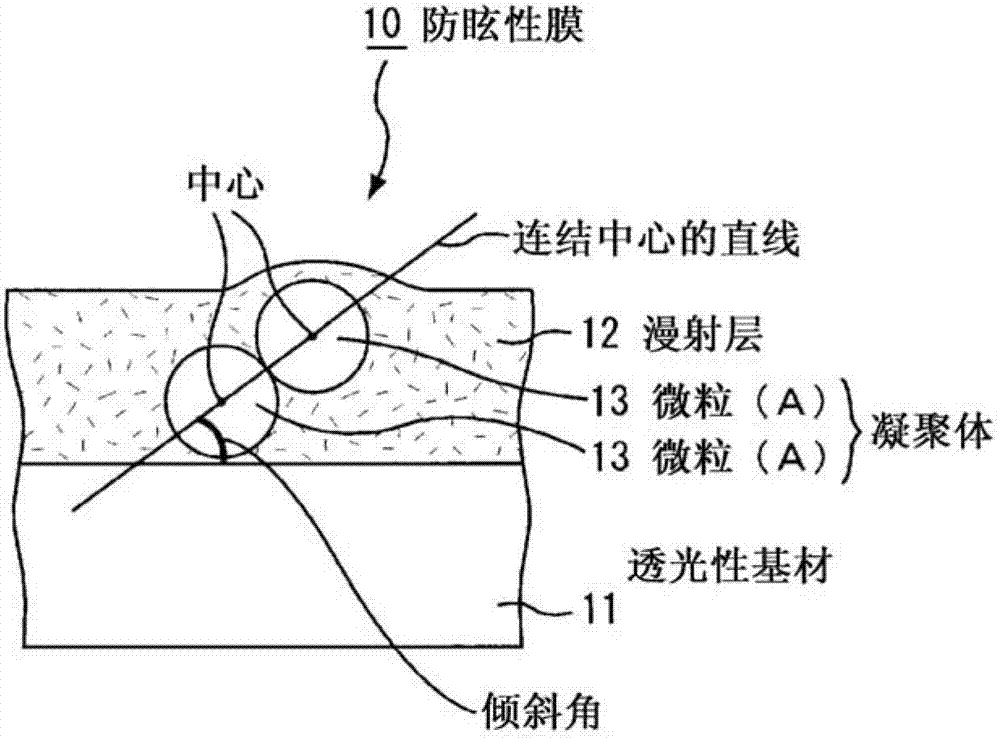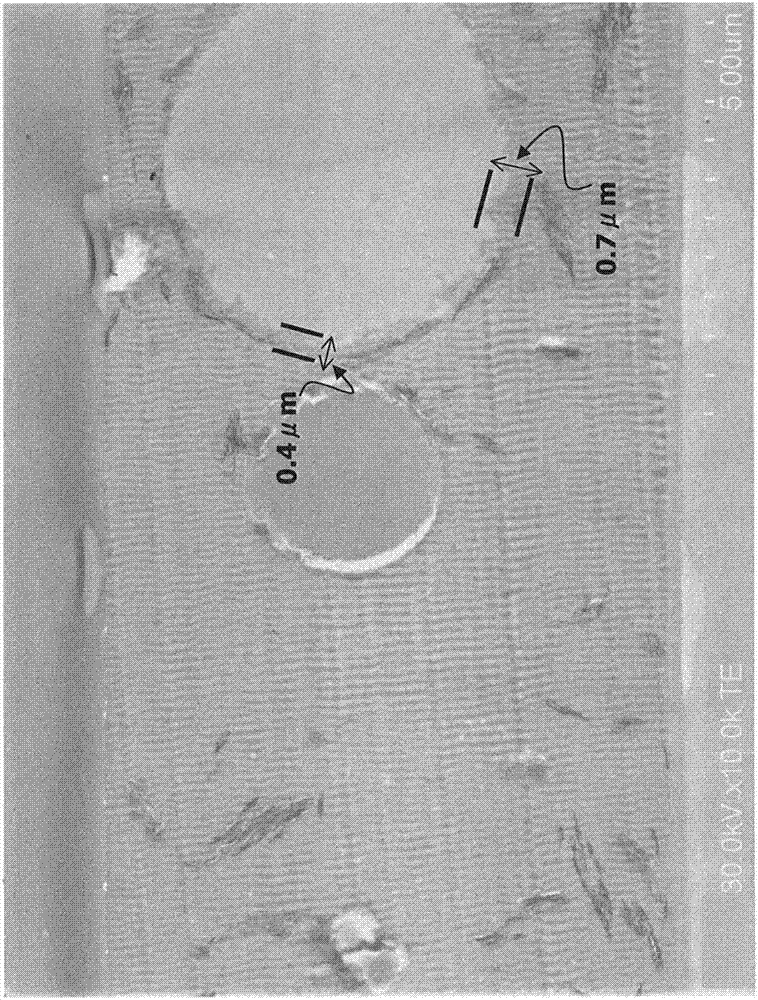Anti-glare film, manufacturing method for same, polarizing plate and image display device
An anti-glare film and coating technology, which is applied in polarizing elements, chemical instruments and methods, nonlinear optics, etc., can solve the problem of particle agglomeration state of amorphous agglomerates of anti-glare layers, reduced visibility of display images, etc. Inability to adequately suppress problems such as fading
- Summary
- Abstract
- Description
- Claims
- Application Information
AI Technical Summary
Problems solved by technology
Method used
Image
Examples
Embodiment 1
[0209] First, triacetyl cellulose (manufactured by Fujifilm Co., Ltd., thickness 80 μm) was prepared as a translucent substrate.
[0210] Next, as a radiation-curable adhesive, a mixture of pentaerythritol triacrylate (PETA), dipentaerythritol hexaacrylate (DPHA) and polymethyl methacrylate (PMMA) (mass ratio; PETA / DPHA / PMMA) was used. =86 / 5 / 9) (refractive index 1.51), as photopolymerization initiator, use 1-hydroxyl-cyclohexyl-phenyl-ketone: Irgacure 184 (manufactured by BASF company) (relative to adhesive solid content 100 mass 5 parts by mass), with respect to 100 parts by mass of the radiation-curable adhesive, high-crosslinked polystyrene particles (refractive index 1.59, average particle diameter 4.0 μm) 12 as fine particles (A) were contained therein. Parts by mass contained 20 parts by mass of talc particles (refractive index: 1.57, average particle diameter D50: 0.8 μm) as a layered inorganic compound with respect to 100 parts by mass of the radiation-curable adhesive...
Embodiment 2~7、 comparative example 1~9
[0213] (Examples 2-7, Comparative Examples 1-9, Reference Example 1)
[0214] The anti-glare film was produced in the same manner as in Example 1 except that the thicknesses of the components added to the coating liquid and the formed diffusion layer were shown in Table 1.
[0215] 【Table 1】
[0216]
[0217] In Table 1, the details of the symbols shown in the microparticles (A), organic microparticles (B), radiation-curable adhesives, and layered inorganic compounds are as follows. In addition, in Table 1, content of microparticles|fine-particles (A), organic microparticles (B), and layered inorganic compound shows content (mass part) with respect to 100 mass parts of radiation-curable adhesives.
[0218] (Particle A)
[0219] A: Highly cross-linked polystyrene particles (refractive index 1.59, average particle diameter 4.0 μm, manufactured by Soken Chemical Co., Ltd.)
[0220] B: Highly cross-linked acrylic-polystyrene particles (refractive index 1.57, average particle...
PUM
| Property | Measurement | Unit |
|---|---|---|
| The average thickness | aaaaa | aaaaa |
| The average particle size | aaaaa | aaaaa |
| The average particle size | aaaaa | aaaaa |
Abstract
Description
Claims
Application Information
 Login to View More
Login to View More - R&D
- Intellectual Property
- Life Sciences
- Materials
- Tech Scout
- Unparalleled Data Quality
- Higher Quality Content
- 60% Fewer Hallucinations
Browse by: Latest US Patents, China's latest patents, Technical Efficacy Thesaurus, Application Domain, Technology Topic, Popular Technical Reports.
© 2025 PatSnap. All rights reserved.Legal|Privacy policy|Modern Slavery Act Transparency Statement|Sitemap|About US| Contact US: help@patsnap.com



